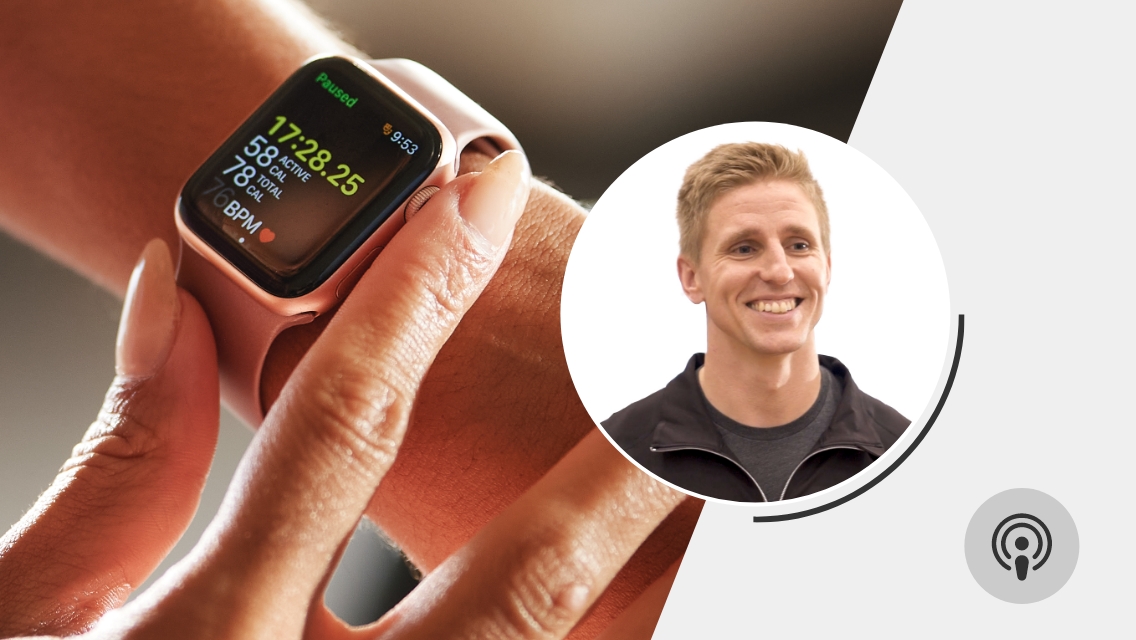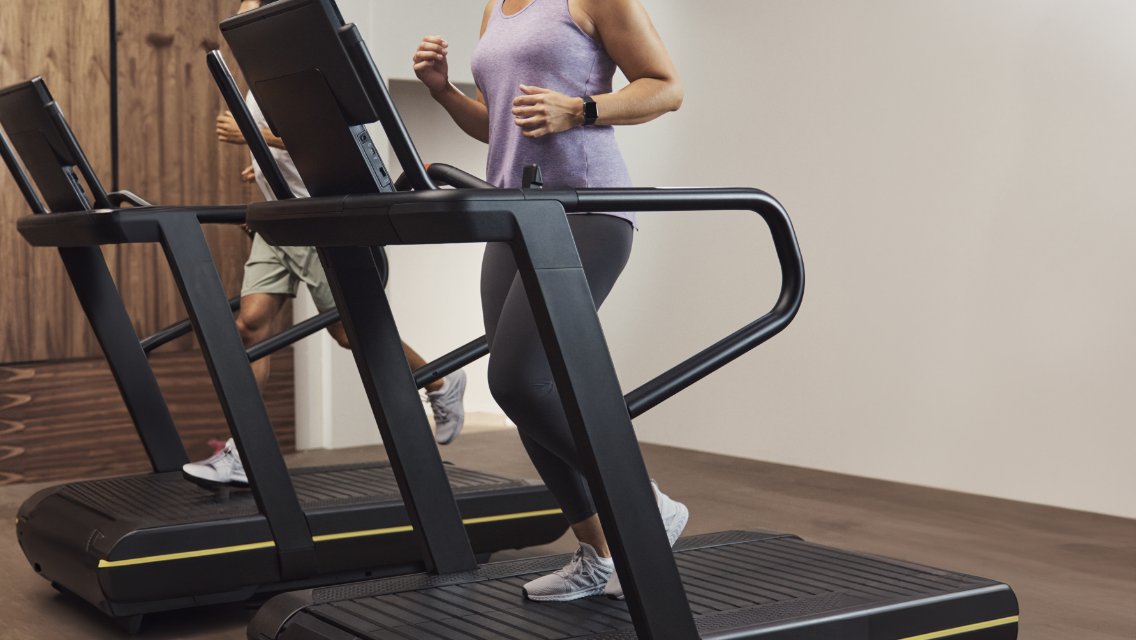Have you ever wondered how in-shape you are? If your fitness level is where it ought to be? Or how exactly you even gauge how fit someone is, really?
Some might base answers to these questions off scale weight alone. Others may look to their similarly-aged family members and friends and grade themselves on a curve based on aesthetics or activity level. For those who want their calculation to be more well-rounded and objective, they might use metrics such as body composition and body-fat percentage, symptoms questionnaires, fitness benchmarks (such as one-mile run or walk times or max push-ups), or even changes in blood pressure and blood lab markers.
One marker that should be included in everyone’s routine assessment plan, however, is VO2 max.
What is VO2 max?
The term “VO2” stands for “volume of oxygen,” and a VO2 score, or VO2 max, is an objective measure of the volume of oxygen that your body can utilize at any one time. It’s calculated in milliliters of oxygen per kilogram you weigh, per minute of activity. This metric is a standard measure of cardiovascular fitness potential, and the higher it is, the better. Here’s why:
When you exercise, your heart rate increases to deliver the oxygen you’re breathing from your lungs to your muscles. Your muscles use the delivered oxygen (O2) to generate energy in the form of a substance called adenosine triphosphate, or ATP. This energy production, when efficient, is a sign of aerobic fitness and the ability to handle more activity and more stress.
Research studies have demonstrated a significant link between VO2 max scores and mortality. In other words, the higher your cardiorespiratory fitness, the lower your risk of death. And on the flip side, evidence suggests that lower markers of cardiorespiratory fitness (as measured with VO2 max scores) are just as dangerous to your health as smoking, diabetes, and heart disease.
What’s encouraging and empowering, however, is that your cardiorespiratory fitness and VO2 score are highly modifiable and within your control. The biggest impacts on health are often seen in those who have the most room for improvement (i.e., those who aren’t fit at all that begin an exercise program). However, current evidence also suggests there’s no upper limit to the positive impacts either, meaning that even if you’re considered “fit,” you’ll still benefit from getting fitter.
Essentially, VO2 scores, especially when tracked over time, quantify not only how fit you are, but also the massive impact your exercise program has on your overall resilience and quality of life.
How to Measure Your VO2 Max
There are two general ways to estimate your VO2 max. The first is highly accessible, but will not provide the same level of accuracy as the second method. Note that some fitness trackers also have a VO2 max estimation feature as well.
- Calculation method: This technique uses a calculation that might be directionally helpful, but is known amongst fitness professionals to be inaccurate compared to actual data-driven tests. Here’s how you do it:
- Determine your estimated maximum heart rate: Subtract your age from the number 220 to get your estimated maximum heart rate measured in beats per minute (BPM).
- Determine your resting heart rate: Take your pulse using your pointer and middle finger and gently pressing on the inside of your wrist or on your neck just under the back part of your lower jawbone until you feel your pulse. Set a timer for one minute, and during that minute, try to relax and count how many beats you feel.
- Divide your estimated maximum heart rate by your resting heart rate, and multiply this number by 15 to get your estimated VO2 max.
- Gold-standard method: Certain Life Time club locations offer an Active Metabolic Assessment™ that uses a mask and medical-grade device to determine your oxygen consumption and carbon dioxide exhalation across various exercise intensities. Part of this test includes an estimated VO2 max score.
VO2 Score Target Ranges
The ranges of very poor to optimal VO2 scores vary by body composition and age. Since women tend to naturally carry a higher percentage of fat than men, and men tend to carry more lean muscle, VO2 max values and target ranges tend to be higher for males.
Age also tends to change both our body composition (due to risk of muscle loss) and how youthful our hearts are. While these factors can certainly be influenced by our lifestyle habits, the target VO2 ranges of what’s poor versus optimal decline a bit as we age.
At Life Time, we have a high standard of health. Therefore, we like to encourage our clients to aim for the optimal range of the decade younger than their true chronological age according to the charts below (note: if viewing this article on your phone, please tip it horizontally to view the charts in their entirety).
| Comparison of Females by Age | ||||||
| Very Poor | Poor | Fair | Good | Great | Optimal | |
| 13–19 | <25.0 | 25.0–30.9 | 31.0–34.9 | 35.0–38.9 | 39.0–41.9 | >41.9 |
| 20–29 | <23.6 | 23.6–28.9 | 29.0–32.9 | 33.0–36.9 | 37.0–41.0 | >41.0 |
| 30–39 | <22.8 | 22.8–26.9 | 27.0–31.4 | 31.5–35.6 | 35.7–40.0 | >40 |
| 40–49 | <20.9 | 21.0–24.3 | 24.5–28.8 | 29.0–32.7 | 32.9–36.8 | >36.9 |
| 50–49 | <20.2 | 20.2–22.7 | 22.8–26.9 | 27.0–31.4 | 31.5–35.7 | >35.7 |
| 60+ | <17.5 | 17.5–20.1 | 20.2–24.4 | 24.5–30.2 | 30.3–31.4 | >31.4 |
| Comparison of Males by Age | ||||||
| Very Poor | Poor | Fair | Good | Great | Optimal | |
| 13–19 | <35.0 | 35.0–38.3 | 38.4–45.1 | 45.2–50.9 | 51.0–55.9 | >55.9 |
| 20–29 | <33.0 | 33.0–36.4 | 36.5–42.4 | 42.5–46.4 | 46.5–52.4 | >52.4 |
| 30–39 | <31.5 | 31.5–35.4 | 35.5–40.9 | 41.0–44.9 | 45.0–49.4 | >49.4 |
| 40–49 | <30.2 | 30.2–33.5 | 33.6–38.9 | 39.0–43.7 | 43.8–48.0 | >48.0 |
| 50–49 | <26.1 | 26.1–30.9 | 31.0–35.7 | 35.8–40.9 | 41.0–45.3 | >45.0 |
| 60+ | <20.5 | 20.5–26.0 | 26.1–32.2 | 32.3–36.4 | 36.5–44.2 | >44.2 |
How to Improve Your VO2 Score
No matter where you are on the scale above, it’s possible for most people to make meaningful changes to their VO2 score. The incremental improvements to the score itself become smaller the more fit you are and the closer your score is to optimal, which is to be expected.
1. Perform high-intensity interval training — the right way.
As your exercise intensity increases, so does your heart rate and calorie burn, along with the type of calories burned for fuel. At lower intensities, you burn fewer calories, but a higher percentage of those calories are from fat. As intensity and heart rate increase, the percentage of total calories burned during exercise that are burned from fat decline and eventually drop off until you’re burning almost exclusively carbohydrate.
The point of dramatic drop-off of fat burn is called your anaerobic threshold, or AT. High-intensity interval training in short bursts above your confirmed anaerobic threshold for a few minutes at a time can help drive up your VO2 max score, provided they’re done at a frequency and duration that doesn’t overly stress your body. If you calculate your total number of minutes doing conditioning or cardio in a given week, this type of training should make up about 20 percent of that time. The other 80 percent should be spent at lower-intensity ranges, or building your aerobic fitness.
These interval workouts are shorter in duration (usually 10 to 20 minutes or so), include recovery intervals to bring your heart rate down between bouts of intensity, and are typically only done one to two times per week, max. They also should be spaced out throughout a weekly workout routine to ensure they’re not done back-to-back.
2. Lose weight — in a healthy manner, without losing any strength.
Since your weight is used in the calculation of your VO2 max score, the numbers favor an increased score when scale weight is lower.
But as common sense would suggest, losing weight in a manner that weakens you will not improve your health. Losing excess body fat and inflammation — while simultaneously building up your strength reserves and lean tissue — can provide immense benefit. Since scale weight alone is misleading, it’s crucial to track your body-fat percentage as well.
And while the best strategy for optimizing body composition may vary slightly for everyone, here are a few foundations to focus on that apply to most people:
- Sleep for at least seven hours per night
- Manage your stress
- Target consuming one gram of protein per pound of ideal body weight
- Drink an ounce of water for every two pounds you weigh, plus 16 ounces per hour of exercise you complete
- Strength train a minimum of three times per week, more if you’re able
- Prioritize daily movement outside of exercise
- Limit intake of added sugar and alcohol
3. Optimize your nutrient status.
Your body’s ability to deliver oxygen depends on the health of your red blood cells and their oxygen-carrying capacity, and the ability to do so requires several nutrients, including iron, vitamin B12, and folate. Below-optimal levels will cause fatigue, shortness of breath, and, when significant, anemia. All of these will decline your ability to utilize oxygen, generate energy, and optimize your VO2 score.
To help support your vitamin and mineral status, aim to include one to two palm-sized servings of meat, fish, or poultry at each meal. If iron is a concern, try to source that protein from grass-fed beef and dark meat poultry several times throughout the week and pair it with a vitamin C source such as broccoli, bell peppers, or strawberries.
It’s also incredibly impactful to chew foods thoroughly and avoid drinking a large volume of liquids at mealtimes, as not to dilute the digestive enzymes required to properly break down and absorb nutrients. For most, taking digestive enzymes and incorporating a high-quality, capsule-based multivitamin with the most bioavailable nutrient forms can be helpful as well.




